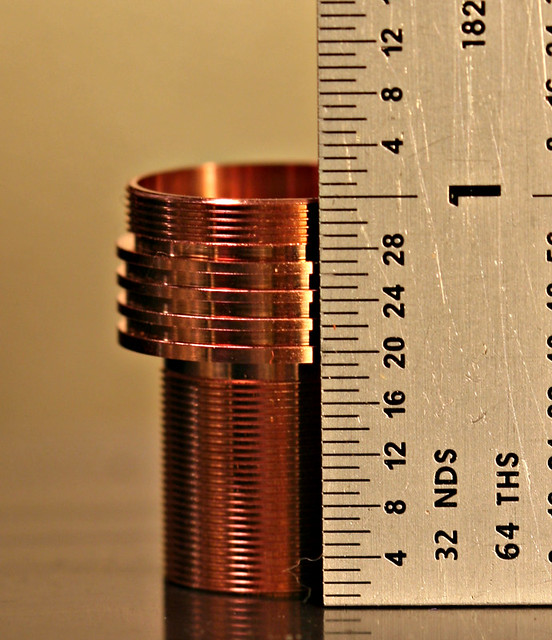After recently reading some threads about the benefits of direct bonding leds, I have decided I want to do this in a p60 host. However, I have very little knowledge in electronics and stuff of this nature so I wanted to talk out my ideas first. I have decided on 2 builds, a triple nichia and a single XML drop-in. I have some ideas and was just wondering if they sound plausible and if you guys have any recommendations etc.
triple nichia:
So with this build, I plan on using a copper rod cut to size with a hole drilled down the middle. On one end, I would solder the filed down brass pill so I can easily mount a driver. Instead of sticking a triple XPG star to the top, I was thinking of making this whole copper chunk a “star” using the method OL talked about in his thread (I want to eliminate the thermal grease junction so would rather not make a separate copper star). I will solder 3 very small pieces of rectangular pads on top for bonding the LEDs. I will probably have to use a torch to heat the whole pill to reflow the LEDs.
XML:
Similar to the triple nichia, I want to use direct bonding to copper. Initially I was planning to just make a copper star (as mentioned in the OL thread) and reflow an XML-2 to it. I would then install this star as a typical p60 build. Then I would add a copper round inside the driver side of the pill for extra heat sinking. This I hope would help with heat management at the LED.
However, I was also thinking of drilling out the middle of the pill to get rid of the brass and to just stick a whole rod of copper in it instead. This copper chunk would serve as the star and an XML-2 would be reflowed to the top with a torch (I want to get rid of the star/thermal grase/brass pill junction.)
Does this sound crazy or would it work out?

